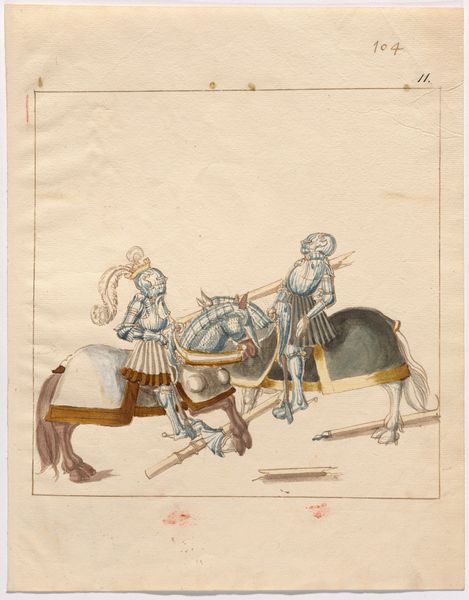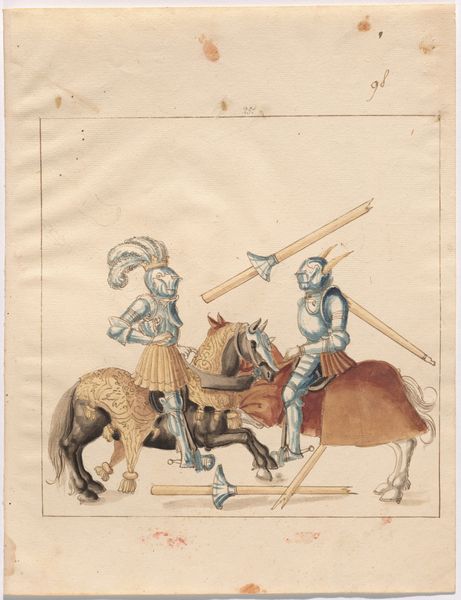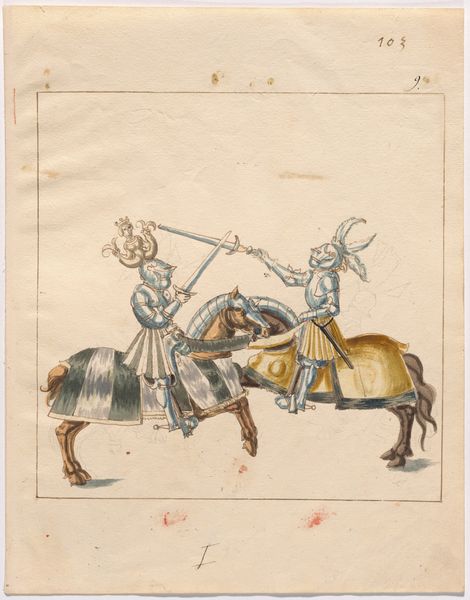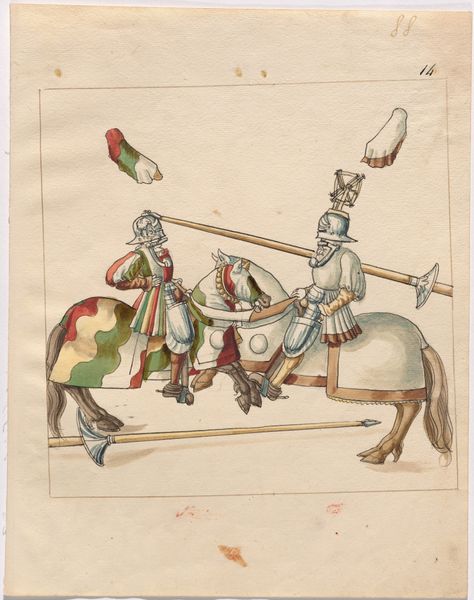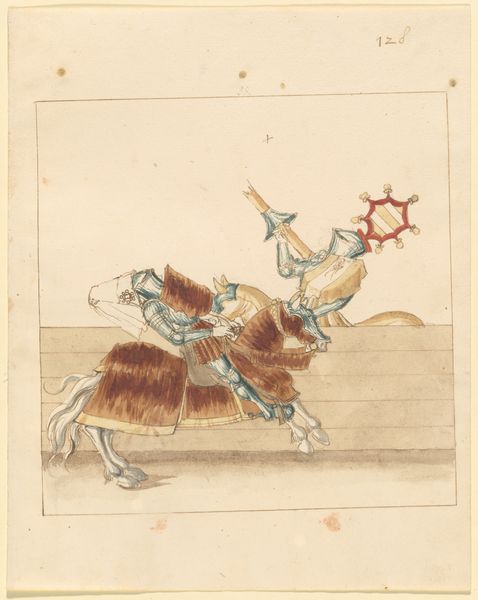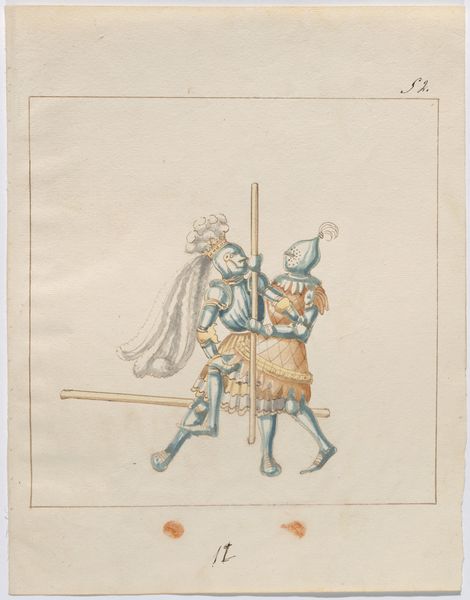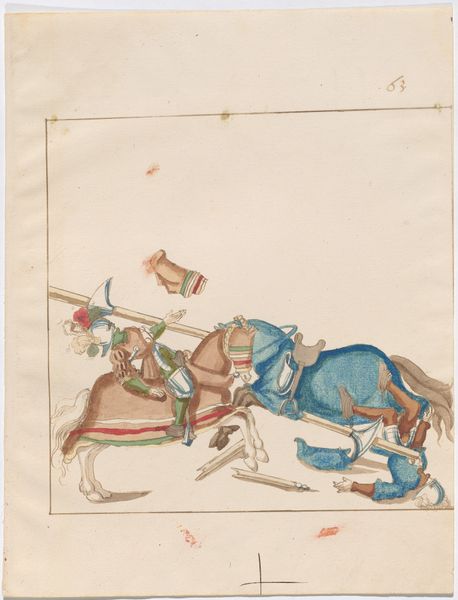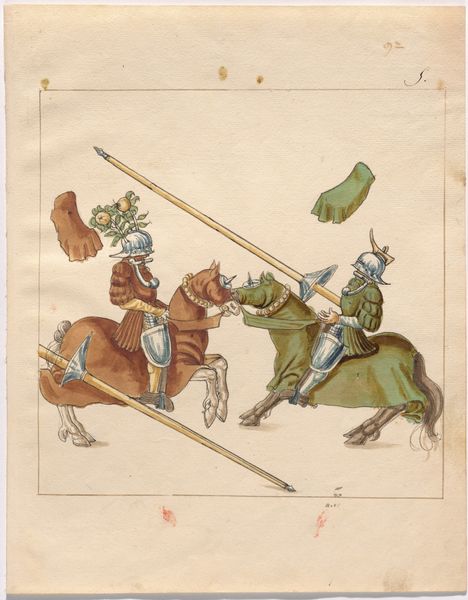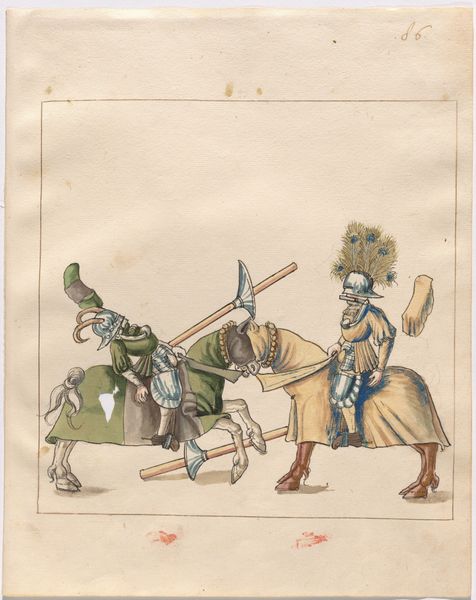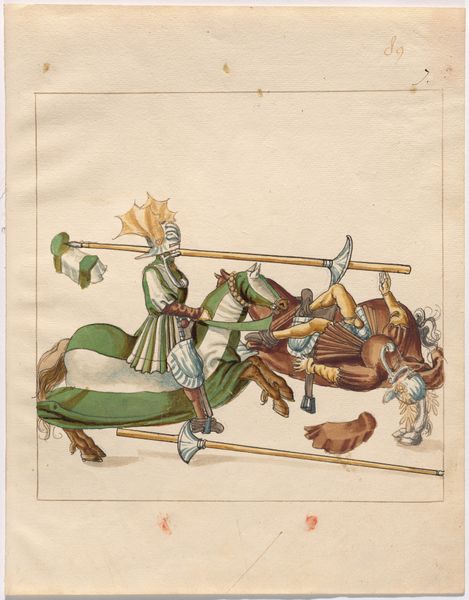
Mock Joust of War with Flying and Exploding Shields c. 1512 - 1515
0:00
0:00
drawing, coloured-pencil, watercolor
#
drawing
#
coloured-pencil
#
water colours
#
figuration
#
11_renaissance
#
watercolor
#
coloured pencil
#
history-painting
#
miniature
#
watercolor
Dimensions: sheet: 34.2 × 26.3 cm (13 7/16 × 10 3/8 in.)
Copyright: National Gallery of Art: CC0 1.0
Curator: Looking at this drawing, “Mock Joust of War with Flying and Exploding Shields,” which dates to around 1512-1515, I’m immediately struck by the fragility suggested by the watercolor medium, clashing violently with the theme of war it illustrates. Editor: It feels almost satirical, doesn't it? The delicate lines and washes of colour belie the supposed violence. It suggests a commentary on the spectacle, or even the futility, of conflict during the Renaissance. What context might inform this interpretation? Curator: The Renaissance was a period of burgeoning humanism, with a rising questioning of traditional power structures and ideals. Depictions of warfare frequently functioned as explorations into the tension between the glorious ideals of chivalry, contrasted by its gruesome realities, influencing humanist discourse, exploring gender and societal hierarchies inherent in militaristic cultures. Editor: Let's not overlook the craftsmanship at work, the colored pencil lines and use of watercolor create striking contrasts between the heavily armoured knights. Consider the labor and artistry needed to create even such a small, satirical piece and also how these images would have been circulated and viewed. What level of consumption are we speaking about? Curator: Access and dissemination are crucial elements. Its miniature scale and materials propose it was perhaps meant for personal reflection, possibly enjoyed within courtly circles during a specific performance event, underscoring both personal intellectual refinement, but equally power imbalances within social structures and genders. Editor: I see a subversion in the depiction of materials: simulated combat, exploding shields rendered so meticulously yet almost cartoonish, which lessens the perceived reality. The entire scene borders on spectacle. The focus on craft suggests a challenge to prescribed values surrounding noble military engagement through careful attention to visual production. Curator: I agree; we might perceive in this detailed craft, an early challenge to orthodox representations and values connected with nobility. It seems intended to deconstruct traditional patriarchal narratives concerning warfare. Editor: Ultimately, examining it from production, we are left to think how art-making can serve as critique of the systems that surround them, subtly at times—and through such materials. It invites closer inspection to what power structures support. Curator: For me, it illustrates that art provides a critical tool for us to rethink our perceptions of gendered displays and narratives inherent within art, or seemingly remote from its reality, encouraging fresh interpretation on art itself.
Comments
No comments
Be the first to comment and join the conversation on the ultimate creative platform.
